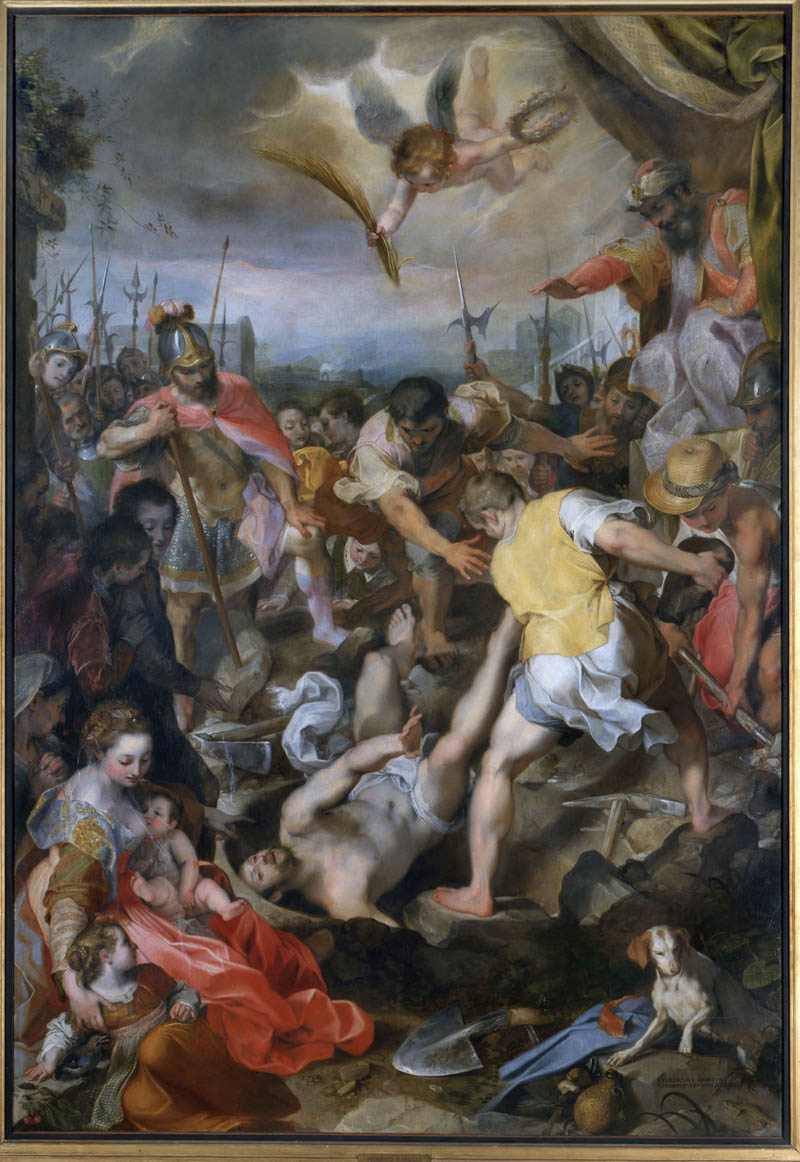Roman Text is taken from The Saint Andrew Daily Missal,
unless otherwise stated.
unless otherwise stated.
Italic Text is taken from Wikipedia - the free encyclopaedia,
unless otherwise stated.
Saint Pius V.
Pope and Confessor.
Feast Day 5 May.
Double.
White Vestments.

English: Pope Saint Pius V.
Deutsch: Porträt des Papst Pius V.
Artist: El Greco (1541–1614).
Date: Circa 1600 - 1610.
Current location: Private collection, Paris.
Source: The Yorck Project: 10.000 Meisterwerke der Malerei.
DVD-ROM, 2002. ISBN 3936122202. Distributed by
DIRECTMEDIA Publishing GmbH.
Permission: [1].
(Wikimedia Commons)
Pius, born at Bosco, in Lombardy, Italy, entered at the age of fourteen into The Order of Preachers (The Dominicans).
As Bishop, Cardinal and Pope (Introit, Epistle, Communion), he put to profit the talents entrusted to him by God (Gospel).
His Pontificate, although short, was one of the most glorious of the 16th-Century. Protestantism had proclaimed The Reformation and Islam threatened The West. To remedy the ills, under which Christendom groaned, Pope Saint Pius V enforced obedience to The Decrees of The Council of Trent, published a new edition of The Missal and Breviary, and obtained, by the Prayers he asked for, the glorious victory won by the Christian forces at Lepanto in 1571.
He died on 5 May 1572, reciting The Hymn of Paschaltide.
Mass: Státuit.
The following Text is from Wikipedia.
Pope Saint Pius V (17 January 1504 – 1 May 1572), born Antonio Ghislieri (from 1518 called Michele Ghislieri, O.P.), was Pope from 8 January 1566 to his death in 1572. He is Venerated as a Saint of The Roman Catholic Church. He is chiefly notable for his role in The Council of Trent, The Counter-Reformation, and the standardisation of The Roman Rite within The Latin Church.
Pius V declared Thomas Aquinas a Doctor of The Church and patronised prominent Sacred Music composer Giovanni Pierluigi da Palestrina.
As a Cardinal, Ghislieri gained a reputation for putting Orthodoxy before personalities, prosecuting eight French Bishops for Heresy. He also stood firm against nepotism, rebuking his predecessor, Pope Pius IV, to his face, when he wanted to make a thirteen-year-old member of his family a Cardinal and subsidise a nephew from The Papal Treasury.
In Affairs of State, Pius V excommunicated Queen Elizabeth I of England for schism and persecution of English Catholics during her reign. He also arranged the formation of The Holy League, an alliance of Catholic States. Although outnumbered, The Holy League famously defeated The Ottoman Empire, which had threatened to over-run Europe, at The Battle of Lepanto. Pius V attributed the victory to the intercession of The Blessed Virgin Mary and instituted The Feast of Our Lady of Victories.
























